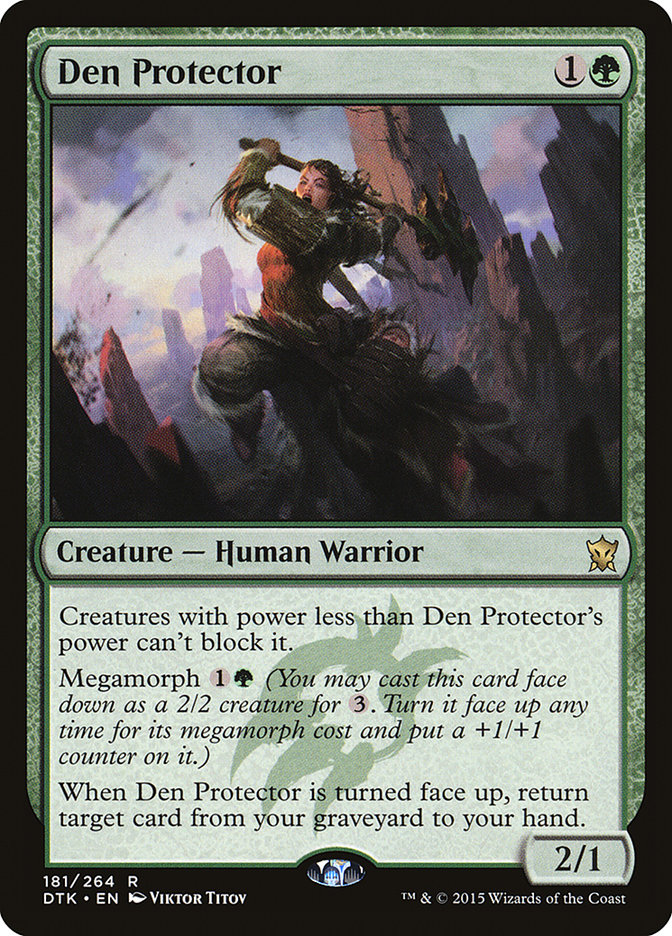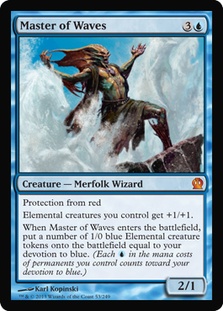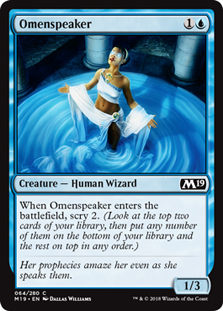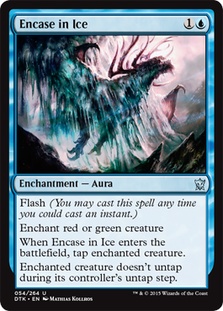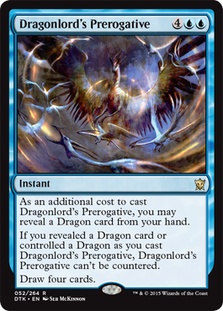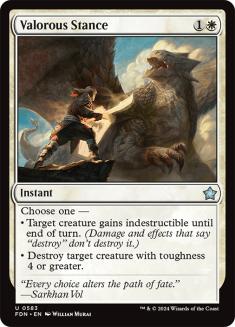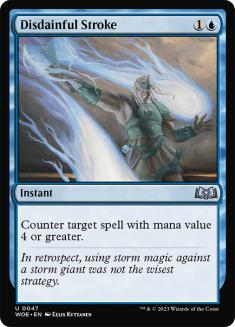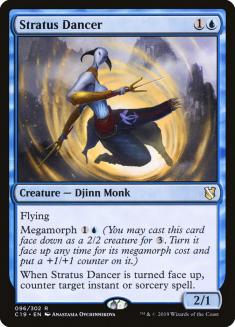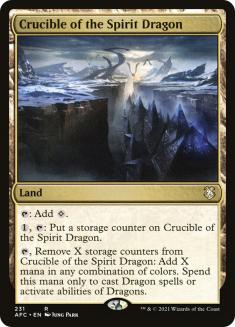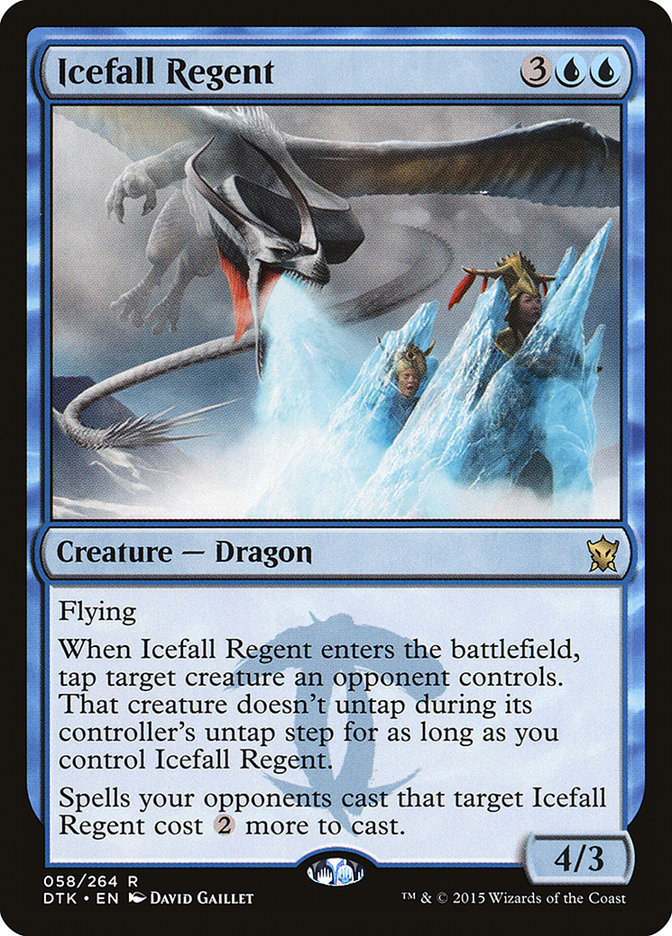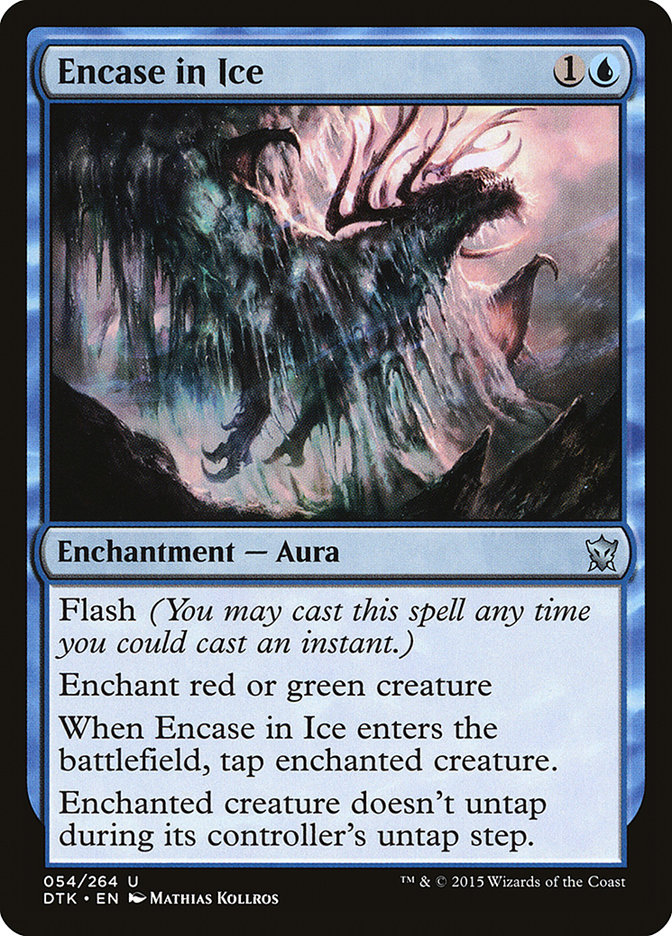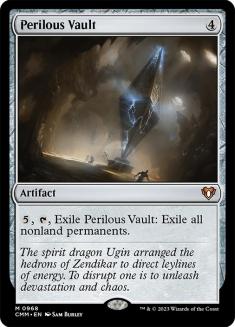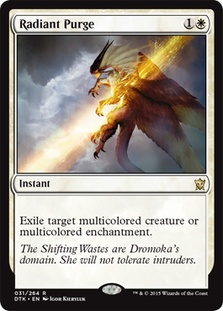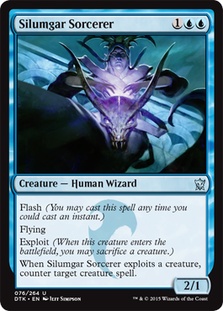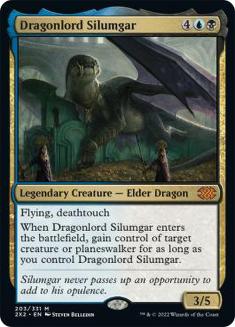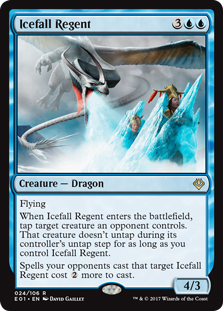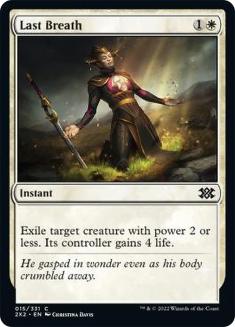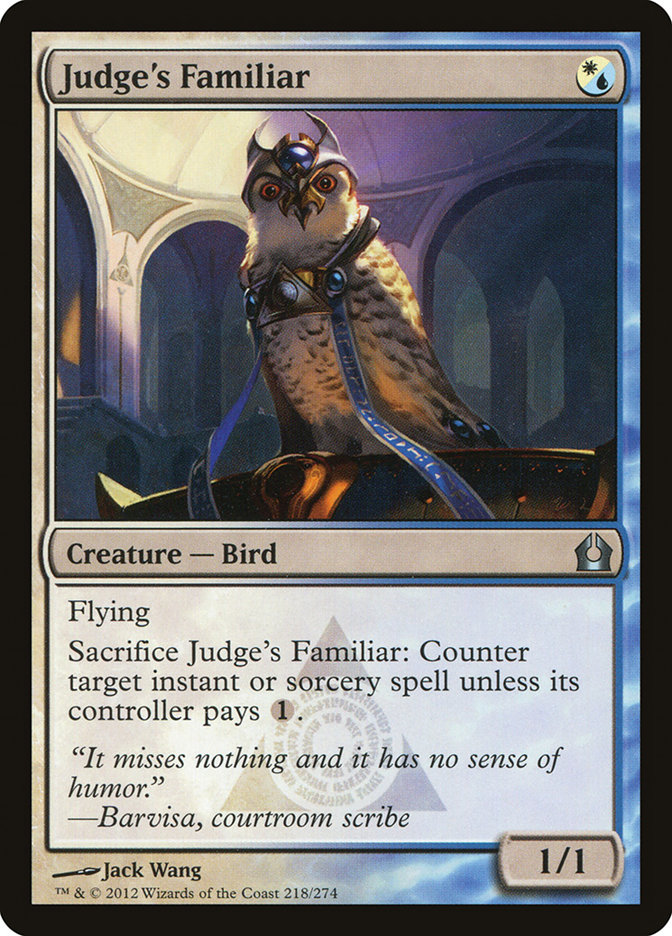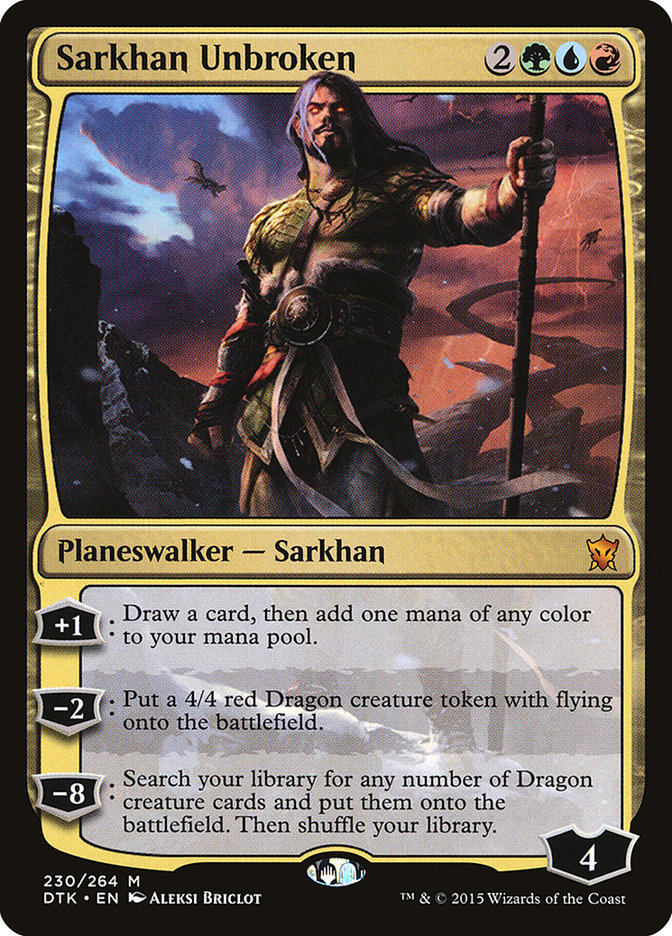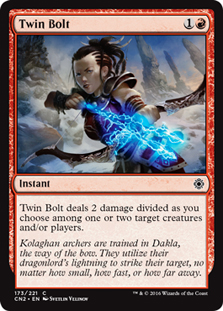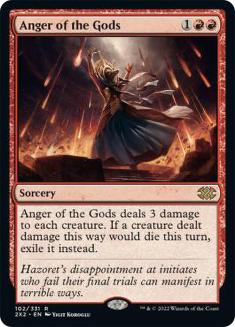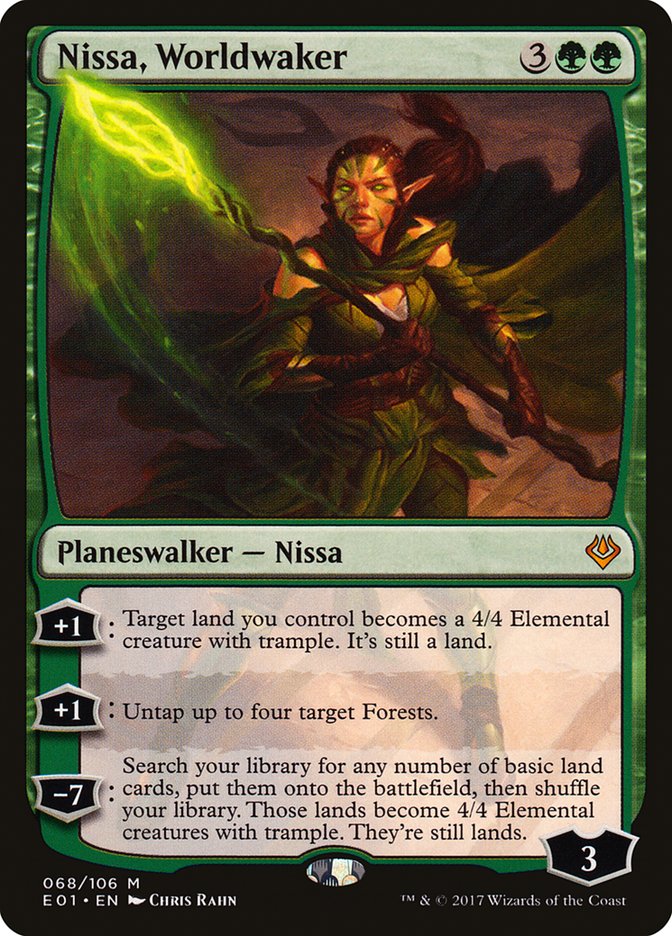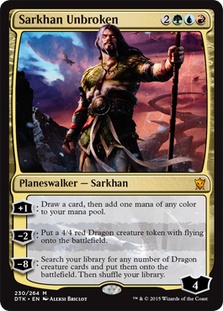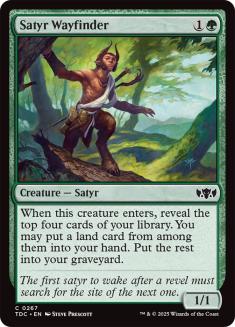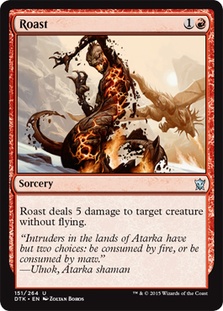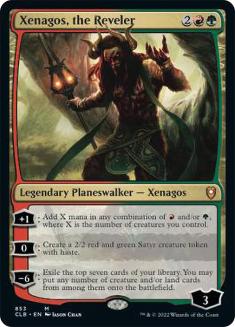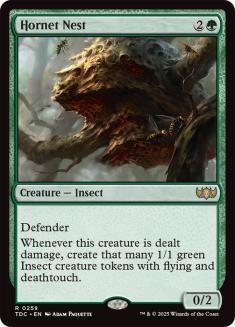Things are finally starting to settle down.
It would appear the Standard format has three basically equally important decks to beat, that together make up almost half the field.
– Red Aggro
– Esper Dragons
– Abzan Aggro
The next tier down are still fairly well represented, with more than half the popularity of the big three:
Previously, we often lumped Deathmist Raptor and Den Protector together, but this week marked the floodgates opening on Den Protector, which is now just
showing up in basically everything, from dedicated megamorph decks to Abzan Aggro to Abzan Control.
Den Protector can be played as a mediocre two-drop when you just want to make any early plays at all against a fast aggro deck, but she does Eternal
Witness duty in the middle and lategame. Sometimes you just really want to get back Thoughtseize or Siege Rhino, but other times you can switch into Den
Protector recursion mode, looping two so that opponents with removal can’t keep them off the table.
That it also has evasion is surprisingly meaningful, dodging tokens even unmorphed and also dodging Courser when it’s +1/+1. If you add an Abzan Charm to
the mix, it’s actually not hard to make it totally unblockable, even by a Siege Rhino.
The rest of the field is a diverse mix of strategies that includes W/U/x Heroic, G/W Collected Company, Green Devotion, and one of each of the five wedges:
Abzan Control, Jeskai Tokens, Temur Aggro, Sultai Reanimator, and Mardu Midrange.
For reference, here are the day 2 metagames from SCG Portland, GP Toronto, and GP Sao Paulo:
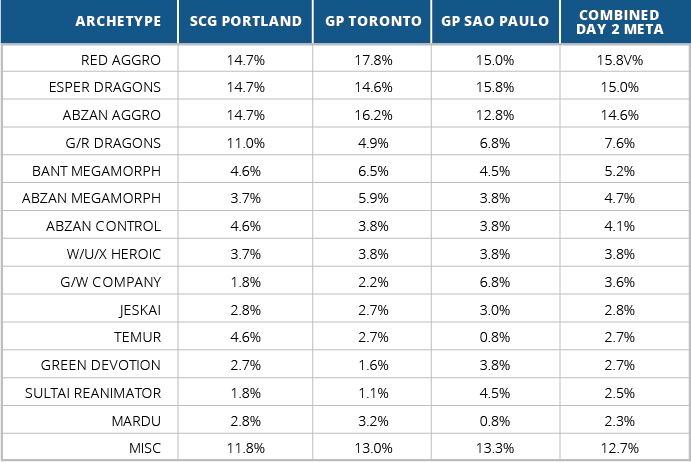
Today, I’d like to do some brewing, aiming for the big three, as there is every reason to believe that they will continue to be the defining pillars of the
format, at least for the time being. The format was evolving rapidly and in such a different way than the previous one, but it appears to have settled down
a lot. We did see a slight increase in G/R Dragons, Abzan Control, and Mardu Midrange, which makes sense given the big three, but on the whole, no major
shake-ups.
In looking for strategies that might be well-positioned against the big three, I remembered a conversation between Michael Flores and I in which he was
floating the idea of maindecking the Omenspeakers in his Five-Color Blue Dragons deck. What if we took the sideboard into Master of Waves concept and
incorporated it into the maindeck while trying to preserve some of the elements that made his deck so good against Esper?
Creatures (25)
- 4 Omenspeaker
- 4 Master of Waves
- 2 Stratus Dancer
- 2 Dragonlord Silumgar
- 4 Dragonlord Ojutai
- 2 Shorecrasher Elemental
- 3 Silumgar Sorcerer
- 4 Icefall Regent
Lands (26)
Spells (9)

Two Shorecrasher Elementals may stick out as strange, but there’s no reason you have to play a playset. The second one you draw actually is greatly
diminished in value since the difference between four and seven waves is nowhere near as valuable as the difference between one and four. Additionally, it
takes a lot of mana to operate a Shorecrasher, and two can be unwieldy. Besides, with Icefall Regent and Dragonlord Ojutai, we’ve got a lot of expensive
plays regardless.
While not as dedicated as most blue devotion decks, this list should still make some fairly respectable Master of Waves. Master of Waves is obviously
amazing versus Red Aggro, but it’s not actually all that bad against Esper Dragons or Abzan Aggro.
The Esper decks rely on Foul-Tongue Invocation, which has chances of hitting the Master with the trigger on the stack, but generally, it doesn’t match up
well against it. While the Master of Waves isn’t a particularly dangerous threat, it generally demands a removal spell, so it’s not that bad.
Our real gameplan against Esper is our use of counterspells (which also includes Silumgar’s Scorn and Stratus Dancer), helping bridge to a higher threat
density in the form of Dragons. Crucible of the Spirit Dragon is harder to support here, but it can give us a big mana advantage in some games.
Sideboarding in a million Dragonlord’s Prerogatives gives us a legit way to just brute force opponents. Because we can play most of our cards proactively,
we’ll typically be able to avoid discarding to handsize.
While this is a fringe enough deck that sideboard guides are probably not the most important, I thought it would be useful to walk through some to help
reveal the thought process that goes into these types of decisions. Many of the same concepts can be applied to other decks and sideboards.
VS Esper Dragons
Out:
In:
While the Masters are a passable threat, they have the greatest risk of trading at a disadvantage among ours, so they can go after sideboarding,
particularly since we want to trim Omenspeakers and go a little bigger.
Master of Waves isn’t at its best against Abzan Aggro either, but again, it’s not embarrassing. They aren’t always going to have Hero’s Downfall, and it
dodges Abzan Charm. Besides, if you can draw out the Downfall so that your Icefall Regent lives, you are actually doing it.
Icefall Regent is one of the best cards against Abzan. It generally can’t be killed the turn it comes down because of the two extra mana clause. That it
locked down a creature typically means that even if they have the Downfall and spend five mana on it, you still held the Siege Rhino at bay a turn. That’s
also one less removal spell for Ojutai or Silumgar, and besides, sometimes they won’t have a removal spell, and you will be in a great racing position.
Encase in Ice maindeck is certainly far from industry standard, but it is very strong against Abzan Aggro and Red Aggro, and against Esper; the most
important battles are big enough to make up for an occasional dead card (or so the theory goes…).
It’s not just the big three either. We actually don’t sideboard it out against the 4th, 5th, 6th, or 7th biggest decks either. Looking at the format on the
whole, you actually want it in your deck about 75% of the time. Besides, it has extra utility to us because of Master of Waves. Each Encase in Ice in play
can be another free 2/1.
VS Abzan Aggro
Out:
In:
That we sideboard out Master of Waves + Omenspeaker against two of the big three isn’t the most ringing endorsement, but maybe Master of Waves is just a
reasonable card against everyone, and an amazing one against some. This list is obviously reboarded against red pretty hard, but it does get a little
after:
VS Red Aggro
Out:
In:
If you’re on the play against someone with Goblin Rabblemaster, it is totally reasonable to keep some or all of the Silumgar’s Sorcerers in. Trimming a Dig
Through Time is totally reasonable, as is another Icefall Regent.
The Crucible of the Spirit Dragon isn’t particularly amazing or anything, but once you cut the Dragonlord Silumgars, you might as well play the Crucible
instead of Swamp. Once you have all five Islands in play, you are not likely to need to find another land with Polluted Delta. All of your cards will cost
five or less!
Blue Devotion generated a lot of buzz when Shorecrasher Elemental was first previewed, but it has yet to really break out of “fringe.” The most successful
breed of Blue Devotion is rarely more than 1 or 2% of the field, but maybe there’s a missing piece of technology that could push it over the edge. It’s
also possible that the right UU two-drop in Magic Origins could be a total game-changer.
For reference, here is an example of U/G Devotion, which splashes Collected Company to help take advantage of being mostly permanents:
Creatures (32)
- 4 Thassa, God of the Sea
- 4 Master of Waves
- 4 Kiora's Follower
- 4 Hypnotic Siren
- 4 Frost Walker
- 4 Stratus Dancer
- 4 Shorecrasher Elemental
- 4 Silumgar Sorcerer
Lands (24)
Spells (4)
Sideboard

Nick’s build is super creature heavy, and despite no double blue two-drops, he actually gets up to five devotion more reliably than the old devotion decks.
First of all, he’s got more creatures, instead of cards like Rapid Hybridization, but secondly, Collected Company puts an average of almost three blue mana
symbols onto the board when you cast it. That it is an instant is particularly devastating when Thassa wakes up by surprise.
While old blue devotion decks typically had 8-9 one-drops, Nick uses just Hypnotic Siren, which can sometimes combine with Kiora’s Follower to be a
functional seven-drop. Once you add a second color, it’s just so much better to play tapped lands than to try to play a bunch of Mana Confluences and
Forests in your Shorecrasher Elemental deck. Besides, without Bident of Thassa, there is less appeal to random bodies for their own sake.
The final piece of the puzzle is that there just aren’t any blue one-drops in the same league as Cloudfin Raptor and Judge’s Familiar. Cloudfin Raptor
combined with unusual sizes like 2/3 and 1/4 would often get huge quickly, exerting a much bigger impact on the board than other one-cost creatures.
Really, though, Cloudfin Raptor was just a stronger Magic card in the same way that Kird Ape is just a stronger Magic card than Savannah Lions.
Judge’s Familiar wasn’t as strong, but it was still better than it usually got credit for. A 1/1 flier for one isn’t enough on its own, and the sweeper of
that era was Supreme Verdict, but it’s ability to disrupt Bile Blight, Hero’s Downfall, and Sphinx’s Revelation was often surprisingly relevant.
I think we’d see a very different format indeed if those two cards were legal…
The next concept I wanted to build around was Mono-Red Control, with Outpost Siege and Chandra, Pyromaster to draw cards. However…
Planeswalkers (6)
Lands (25)
Spells (29)

As I sketched out the list, the biggest problem I encountered was that the list looked horrible. It’s not like the format is particularly vulnerable to
burn the way it is when everyone played shocklands. Hell, lots of people play lifegain lands these days! Besides, Mono-Red Aggro is one of the most popular
strategies, and a lot of people are going to have cards for against them that happen to incidentally be good against us. The burn is effective against
small creatures, sure, but lots of people play cards like Dragonlord Ojutai and Siege Rhino.
Another problem was the manabase. We are basically wasting a mana on the first turn of every game. Why are we not playing Temples in here? Once we have
Temples, why are we staying totally mono-red? This led me to:
Planeswalkers (6)
Lands (26)
Spells (28)

Okay, definitely an improvement, but this deck still looks bad. The blue decks are going to outdraw us most of the time, and we’ve got so few cards they
need to counter, plus basically no pressure.
In thinking about a recent Mardu Tokens deck Flores and I built, I got to thinking, what if we put Crackling Doom into Jeskai Tokens?
Creatures (6)
Lands (25)
Spells (30)

The mana is probably just not worth it, but this one actually looks like it has enough potential to try. Straight up Jeskai Tokens isn’t getting it done,
but perhaps the addition of Crackling Doom gives us enough power, not to mention giving us great answers to two of our biggest problems (Siege Rhino and
Dragonlord Ojutai).
I kind of like Butcher of the Horde right now, and I would love to find a home for it besides typical Mardu (which is fine, but only fine). I also like the
fact that we can sideboard into a sort of Super Friends deck with an awful lot of sweet planeswalkers.
All this thinking about planeswalkers led me back to one of the best cards in Dragons of Tarkir to not have a perfect home yet.
The new Sarkhan is quite powerful despite his relative lack of finishes. The problem is that he requires three colors that aren’t super in the market for
what he brings to the table, at least not on the surface.
Why do I like Sarkhan so much? The normal use is to play Sarkhan and immediately make a Dragon. Now your opponent is forked. You have a 4/4 flier and a
planeswalker that can make a 4/4 flier next turn, or that can just draw a card (while making a mana, possibly accelerating you into Atarka) and leave them
facing another fork next turn, between a 4/4 flier and a planeswalker that draws a card each turn.
Just in terms of raw power, this is a stronger card than Broodmate Dragon!
That makes me really want to find a home for it. Here’s an attempt to play a sort of pseudo-control game with added power coming from Dragon tribal:
Creatures (14)
Planeswalkers (6)
Lands (25)
Spells (15)

This list primarily just tries to spend its mana efficiently each turn, eventually brute forcing people with planeswalkers and Dragons. I particularly like
Satyr Wayfinder for protecting our Dragons from Foul-Tongue Invocation and our walkers from getting attacked (for a turn, which is often all you need).
Their ability to fuel Dig Through Times is also a great way to get some serious momentum going in attrition battles.
The deck itself is quite adaptive, letting us play three different games against each of the big three. For instance:
VS Esper Dragons
Out:
In:
Against Esper, our gameplan is card advantage and planeswalkers, and the sideboard only furthers this. Four Dragonlord’s Prerogatives is pretty filthy!
Our biggest risk in this matchup is Dragonlord Ojutai. We don’t actually have all that many ways to stop it from entering the battlefield, and if it hits,
they hardly even need to protect it as long as they can keep Sarkhan at bay and not walk into Dragonlord Atarka.
VS Abzan Aggro
Out:
In:
Our plan against Abzan is to just try to keep up in the early turns and not let them snowball. Then, we can use Icefall Regent and Atarka to overpower
them.
My biggest concern in this matchup is how mana efficient they are naturally. They can potentially have a lot of medium-to-large threats that we can’t block
well. It’s possible that we might just need more Encase in Ice/Roast action, but I’m hoping Icefall Regent pulls enough weight here.
VS Red Aggro
Out:
In:
Here, we just want to play anything we can on turns 2, 3, and 4, setting up more expensive bombs to actually win it for us. I like hitting from different
angles with the cheap removal and Hornet Nest alongside maindeck sweepers (Twin Bolt and Anger of the Gods) and great blockers (Satyr Wayfinder and Courser
of Kruphix). I’m a little concerned that we might be at risk of getting burned out, but if we start finding that to be the case in testing, we could try
sideboarding Feed the Clan.
These lists are not intended to be finished products ready to take over the metagame, but rather to be instructive in how one might approach brewing new
decks in a format like this.
– Abzan Aggro and Red Aggro are both full of cheap, aggressive threats.
– Abzan Aggro and Esper Dragons both play a healthy dose of removal alongside Thoughtseize and can pick apart decks that rely on one key card.
– Esper Dragons and Red Aggro are both matchups where card advantage can be great if you can just play basically any spell each turn.
Level one is figuring out what the best cards are. The next level is figuring out what beats them.

